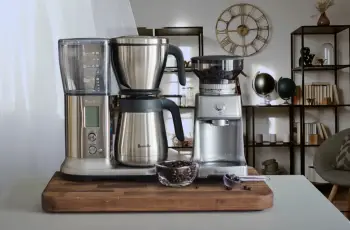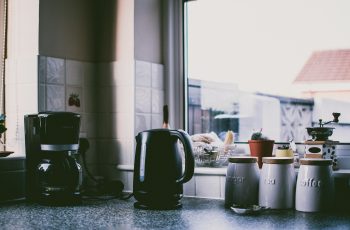Putting in work tirelessly around the clock without taking even a short break can diminish your mental capacity and your productivity. Fortunately, there’s no cause for concern as long as you have a coffee machine within reach. Always feel free to pause for that essential break, prepare yourself a freshly brewed cup of aromatic coffee, and then pick up right where you paused.
A Perfect Cup Of Coffee That Can Be Made For Everyone
We see people have always been in search of that perfect ratio, that ideal pot of coffee. But in reality, there is no such thing as a secret recipe for a perfect pot of coffee. Just a little ground coffee, a little water, and it’s ready. With these tips, you’ll wake up to a phenomenal cup every time.
Measures and Ratios
Right off the bat, we should clarify: a “cup” in this context does not refer to a volume measurement (1 cup = 236 ml = 8 oz). Additionally, it does not refer to a physical cup (mug) of coffee
- How Much Coffee Per Cup
SCAA defines a cup as five fluid ounces, and the golden ratio is one to eight. A cup of coffee contains 8.3 grams of coffee per 150 ml. This cup is different from the regular measuring cup, supposed to be 240 ml. Most coffee maker manufacturers determine a “cup” as 5-oz of liquid, 150 ml (milliliters).
- The Golden Rule
Coffee grounds (grams)measure about water volume (ml) using the golden ratio, a definition derived from the Specialty Coffee Association of America (SCAA), that is 1:18.
- Conversions
The usage of different terminology can be confusing – weight (grams, cups, tablespoons) and volume (milliliters, cups, tablespoons) are often swapped without proper definition. The best solution is to convert everything to common measurements – grams and milliliters.
1 cup = 16 tablespoons or 1 tablespoon = 1/16th cup
One tablespoon (tbsp) of ground coffee is typically one coffee scoop (some coffee machine manufacturers provide larger than 1 tbsp). There are also double-sided coffee scoops, each of which holds one tbsp of ground coffee. In general, you should use two tablespoons (10g of coffee) per 180 milliliters (6 oz.) of water, depending on the type of scoop you use.
The Exact Quantity Of Grounded Coffee For 12 Cups
According to the online recommendations for some top coffee makers, we found the following recommendations:
- 5 fl. oz x 12 = 60 fl. oz
- 60 fl. oz = 1800 ml
Based on the 1:18 golden ratio, 12 cups of coffee require 100 grams.
Getting More Information On it
- Suppose you find that your basket overflows, even after checking the cup size. Then, you have either grounded your coffee too fine and clogged the filter, or your coffee pot manufacturer has decided to make their filter basket a little smaller.
- It is best to figure out how much coffee the basket can hold and add water accordingly. Making sure you use 30 oz (8 x 6 oz cups) of water if your basket only holds eight scoops (16 tbsp) of coffee without overflowing.
- Ultimately, how much coffee you use depends on a person’s taste, but I highly recommend starting with the standard and adjusting from there. Remember, as you move toward more water and fewer grounds, you will extract more off-flavors.
- Many people who claim they dislike strong coffee say they dislike bitter coffee, while weak coffee has more bitter compounds. Weak coffee could not be fixed by adding hot water to make it stronger Weak coffee is just a weak coffee and can never be made strong.
Your Money Saviour
The percolator is by far the most economical method, as it runs and reruns water through coffee grounds so that as many solids can be removed as possible.
For example, one pound of coffee (454 grams or 16 ounces) requires about 4 gallons of water. A 100-cup percolator usually uses 128 ounces per gallon, yielding 512 ounces or 100 x 5 fl. oz cups.
Using the golden ratio in a standard coffee maker, you would get about twice as many cups.
Conclusion
While brewing coffee in the coffee makers, you cannot control how long the coffee brews or the hotness of the water. So you must supervise what you can, which usually means the type of coffee beans, their grind, and the ratio of water to coffee.


